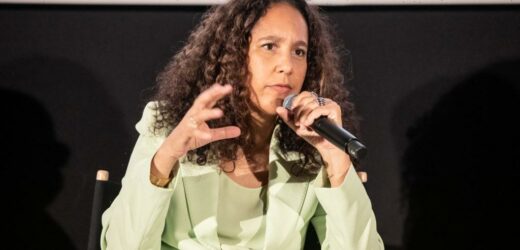When the NAACP Image Awards returns on Feb. 25 for its 54th annual ceremony, there’ll be plenty of cause for celebration. Not only will artists from television, motion picture, music and literature find themselves feted for their contributions, but it’s also the 20th anniversary of the creation of the organization’s Hollywood Bureau – and the first time the show will be fully in front of a live audience since 2020.
But an Image Award event isn’t just another reason to hand out accolades during a packed award season. For organizers and nominees alike, the existence of a show that largely focuses on Black entertainers is an achievement in itself. It exists both within the Hollywood bubble and outside of it, with its own rules and perspectives and, perhaps most importantly, own voters.
“At its core, the Image Awards are a gesture of advocacy,” says Kyle Bowser, SVP, NAACP Hollywood Bureau. “In a simplistic and brilliant way it shifts the authority, or the question of evaluation, out of the hands of those who have been traditionally invested with that power – and asks other people, ‘What do you think?’ And just by asking them to weigh in from their vantage point, you get different answers.”
The crown jewel of any award season remains the Academy Awards; nearly other ceremonies, no matter how prestigious or peer-group focused, tend to be seen as predictive or reflective of the Oscars. Yet the Image Awards stands apart, making its own headlines and frequently honors those who are left out of the discussion elsewhere: This year, Gina Prince-Bythewood’s “The Woman King” garnered nine nominations while being blanked by the Academy; and without much fuss or fanfare, for the first time the Entertainer of the Year nominees are all female (Angela Bassett, Mary J. Blige, Quinta Brunson, Viola Davis and Zendaya).
Still, for some the Image Awards is interpreted as a reaction to Black talent being unseen elsewhere. That’s not entirely wrong, suggests Scott Mills, BET CEO. “Some years, general market award shows do a really good job of being inclusive, and some years they don’t. Broadly, there’s progress being made about the concepts of inclusion and representation, but the progress is so inconsistent. Having a consistent place where the community can come together with a consistent sense of values and perspective is really important.”
This year, the Image Awards will simulcast on BET, CBS and eleven other Viacom properties including MTV, Comedy Central, TV Land and LOGO.
But that’s too simplistic of a view to take with the Image Awards. Advocacy is at their core, but as nominees like to point out, it’s about being appreciated by their community first. “All of us value the Image Awards in terms of us as a community,” says Prince-Bythewood, who has two Image Award nominations this year. “You want acknowledgement from your peers. [“The Woman King”] centers us in a way we haven’t been centered before. But it feels like critics groups are oftentimes the only ones acknowledging our work in a consistent way.”
“A show like the Image Awards is very important, because it brings light to where there’s usually darkness, and people honestly aren’t looking,” says Cliff “Method Man” Smith, nominated this year for “On the Come Up” and “Power Book II: Ghost”). “Remember, the NAACP was doing inclusion before it was trendy. They’re the O.G.s of inclusion.”
NAACP organizers have had their eye on the Hollywood ball virtually since inception; one of the organization’s first major campaigns after its founding in 1909 was to rally against D.W. Griffith’s 1915 feature “Birth of a Nation,” which was the first film shown in the White House. The film’s popularity led to increased membership in the Klu Klux Klan, even in Midwestern states, says NAACP President and CEO Derrick Johnson.
“We knew then, as we know now, the impact that entertainment can have on the psyche of individuals and the public policy that governs us all,” says Johnson. “Those who underestimate the impact of entertainment have not paid attention to history and how entertainment has informed culture, politics and the political environment.”
As the group branched out, an office in Los Angeles was critical to serve intersecting areas of importance: advocacy, public policy and entertainment “that can bolster the work we do across the country,” he adds.
The Hollywood Bureau, says Bowser, may have been formed in 2003 in response to a lack of Black presence on other award shows, but over the years has spearheaded multiple initiatives by working with studios and other industry institutions on DEIA issues, and to create inroads for diverse applicants in creative and BTL work in the industry.
Still, the Image Awards, which debuted in 1967, remains the Hollywood Bureau’s chief responsibility – and in time has evolved to become its own sui generis thing. Today, awards are handed out not just in the expected entertainment categories, but to social media personalities and podcasts, too. (A social justice impact award will go this year to civil rights attorney Benjamin Lloyd Crump). Additionally, no other major award that focuses on film and television also includes honors for books.
“The literary arts have not gone away just because electronic media has had such a boom,” says Bowser, noting that the NAACP has recently made a deal for an imprint with Harper Collins, where some Image Award recipients may end up being published. “It’s important to preserve our interest in the literary arts.”
As one of those nominees, Sheree Renée Thomas (co-editor with Oghenechovwe Donald Epeki and Zelda Knight of “Africa Risen: A New Era of Speculative Fiction”), says that singling out a speculative fiction collection is perfectly on point with the Black experience: “We are living in a science fiction world,” she says. “To be Black is to be hyper-visible and invisible at the same time in this society. That’s science fiction. And it’s an important honor to be recognized by your own community.”
Because the Image Awards are not meant to be merely a reaction to a non-inclusive Hollywood hiring and award system, there’s no plan to shutter it if – somehow – parity emerges in other award shows. “We are often asked a week or two before the show every year, ‘Does this show need to exist?’” says Mills. “This show exists because one, the talented people in our community deeply value being recognized by the community and two, this community values recognizing talented people.”
“The Image Awards exist because it ought to exist,” says Bowser. “There should be a place where the folks who don’t always get asked – are asked what they think. I don’t think it will ever run its course. What was established as ‘the norm’ may run its course, because ‘the norm’ is evolving.”
If there’s one area Johnson still hopes the Awards will address in the future, it’s to find bigger platforms for the Image Awards to appear on. Thirteen channels may just not be enough. “We are one of the few shows, because of the culturally-relevant content, actually grows in viewership on larger platforms,” he says. “Because one thing that’s certain in this country and around the globe – communities of color are growing. We need to be reflective of the content and individuals they celebrate.”
Meanwhile, the Image Awards will continue to provide future inspiration to some of its younger audience members. Smith recalls when he was growing up checking out the show to delight in a room full of people like Phylicia Rashad and Diahann Carroll.
“It has a lot to do with prestige,” he says. “A Soul Train Award, a BET Award – we know where that comes from. But The NAACP, those letters alone let you know this isn’t a game. These are people who broke down barriers to make it easier for the generations that came after them to sit at the table with executives who wouldn’t give us a look before.”
Read More About:
Source: Read Full Article


